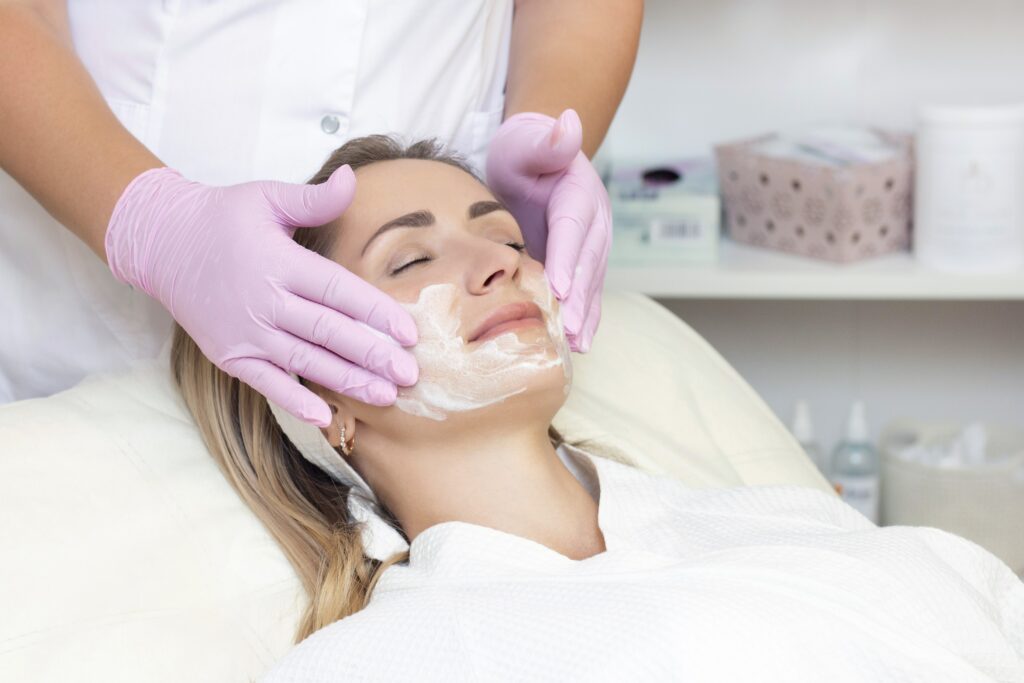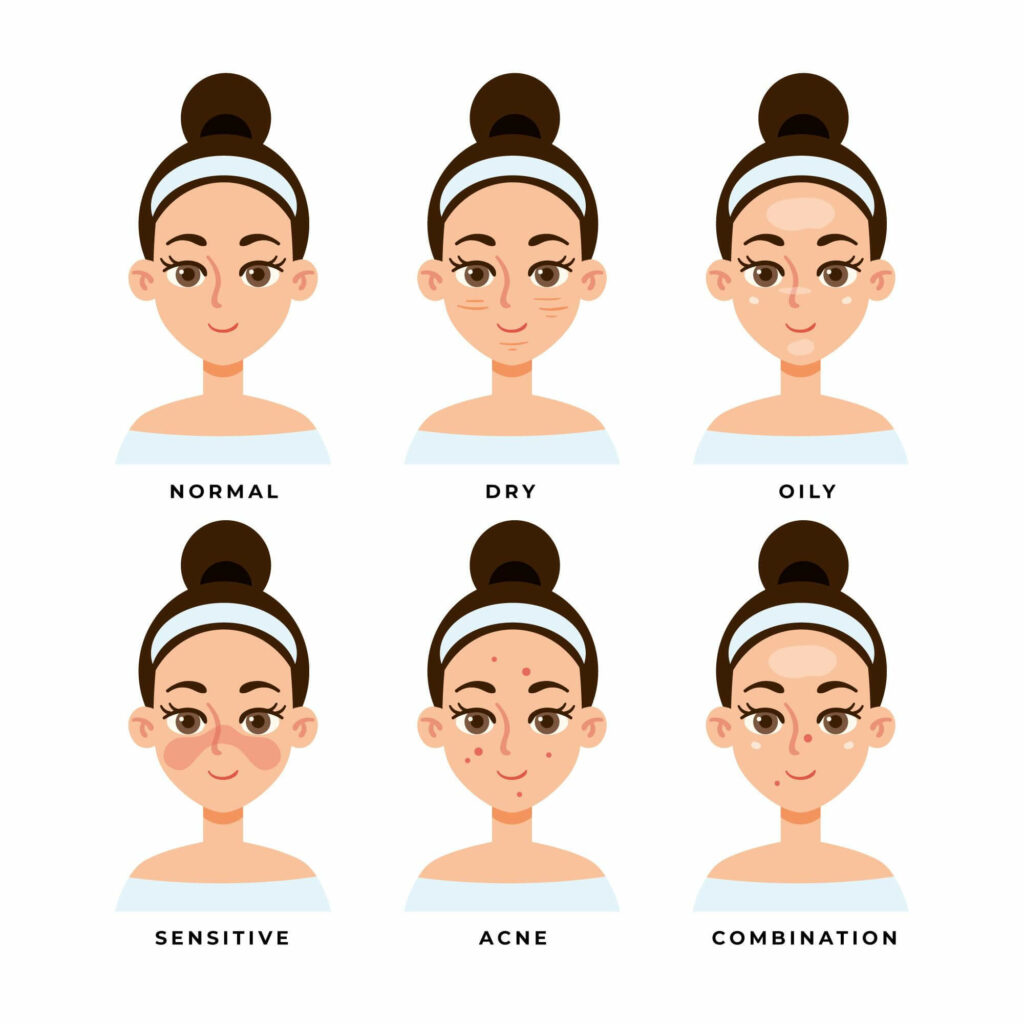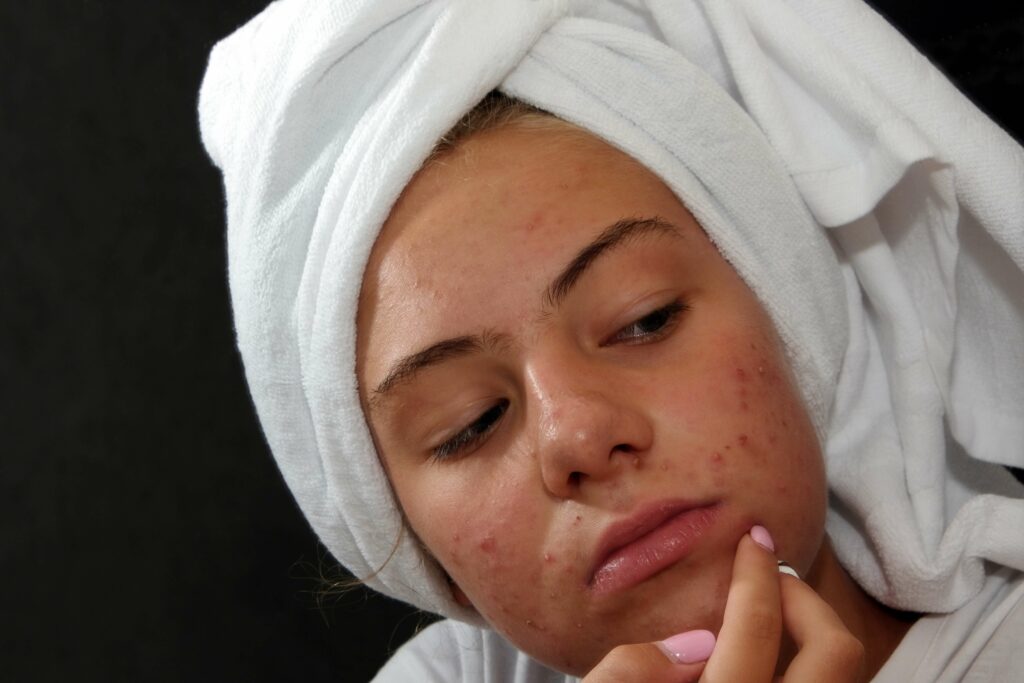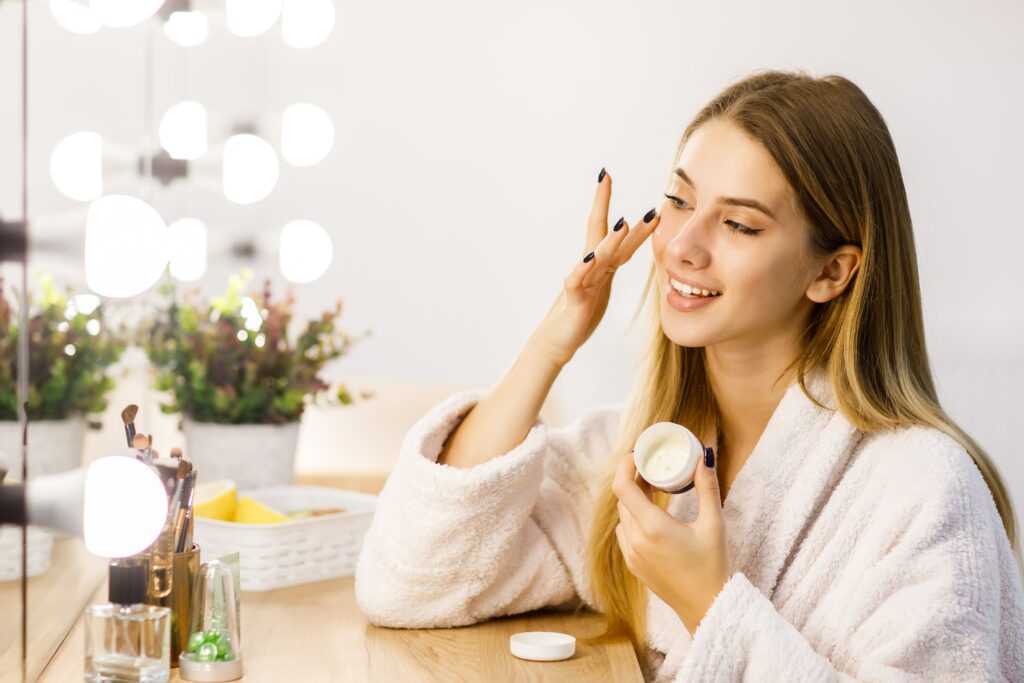
- February 20, 2024
- Comments: 0
- Posted by: Support Team
Facials are a popular skincare treatment that involves a series of steps to cleanse, exfoliate, and nourish the skin. They are typically performed by a licensed esthetician or skincare professional and can be customized to address specific skin concerns. Facials have been around for centuries, with evidence of their use dating back to ancient civilizations such as Egypt and China. Today, facials are an essential part of many people’s skincare routines, offering numerous benefits for the health and appearance of the skin.
The Benefits of Facials
There are many misconceptions surrounding facials, leading some people to believe that they are unnecessary or ineffective. However, the truth is that facials offer a wide range of benefits for different skin types. One common myth is that facials are only beneficial for those with acne-prone or problematic skin. While facials can certainly help improve acne and breakouts, they are also beneficial for other skin types, including dry, sensitive, and aging skin.
 Facials can improve the overall health and appearance of the skin by deeply cleansing the pores, removing dead skin cells, and promoting cell turnover. They can also help to hydrate and nourish the skin, leaving it looking refreshed and rejuvenated. Additionally, facials can improve circulation and lymphatic drainage, which can contribute to a more youthful complexion. Overall, regular facials can help maintain the health and vitality of the skin.
Facials can improve the overall health and appearance of the skin by deeply cleansing the pores, removing dead skin cells, and promoting cell turnover. They can also help to hydrate and nourish the skin, leaving it looking refreshed and rejuvenated. Additionally, facials can improve circulation and lymphatic drainage, which can contribute to a more youthful complexion. Overall, regular facials can help maintain the health and vitality of the skin.
Different Types of Facials: Which One is Right for You?
There are various types of facials available, each designed to address specific skin concerns. Some popular types include hydrating facials, anti-aging facials, and acne-fighting facials. Hydrating facials are ideal for those with dry or dehydrated skin, as they focus on replenishing moisture levels and improving skin texture. Anti-aging facials, on the other hand, target signs of aging such as fine lines, wrinkles, and loss of elasticity. These facials often include ingredients like retinol and peptides to stimulate collagen production and improve skin tone.
For those struggling with acne or breakouts, acne-fighting facials can be highly beneficial. These facials typically involve deep cleansing, exfoliation, and extraction to unclog pores and reduce inflammation. They may also include ingredients like salicylic acid or benzoyl peroxide to target acne-causing bacteria. It’s important to choose a facial that aligns with your specific skin concerns and goals.
Understanding Your Skin Type: A Key to Choosing the Right Facial
Before choosing a facial, it’s essential to understand your skin type. This will help you determine which facial will be most effective for your specific needs. Common skin types include oily, dry, combination, and sensitive. Oily skin is characterized by excess sebum production and a shiny appearance, while dry skin lacks moisture and may feel tight or flaky. Combination skin is a mix of oily and dry areas, while sensitive skin is prone to irritation and redness.
 Different facials are designed to address the specific needs of each skin type. For example, those with oily skin may benefit from a deep-cleansing facial that helps control excess oil production. Dry skin types may benefit from a hydrating facial that replenishes moisture levels. Combination skin can benefit from a customized facial that targets both oily and dry areas. Sensitive skin types should opt for gentle facials that avoid harsh ingredients or techniques.
Different facials are designed to address the specific needs of each skin type. For example, those with oily skin may benefit from a deep-cleansing facial that helps control excess oil production. Dry skin types may benefit from a hydrating facial that replenishes moisture levels. Combination skin can benefit from a customized facial that targets both oily and dry areas. Sensitive skin types should opt for gentle facials that avoid harsh ingredients or techniques.
The Science Behind Facials: How Do They Really Work?
Facials work on a cellular level to improve the health and appearance of the skin. One key aspect of facials is exfoliation, which involves removing dead skin cells from the surface of the skin. This process helps to unclog pores, promote cell turnover, and reveal a fresh layer of skin. Exfoliation can be done through physical means, such as using a scrub or brush, or through chemical means, such as using alpha hydroxy acids (AHAs) or enzymes.
Extraction is another important step in facials, particularly for those with acne-prone skin. This process involves removing blackheads, whiteheads, and other impurities from the pores. It is typically done using sterile tools or by applying gentle pressure with gloved fingers. Extraction can help improve the appearance of the skin and prevent future breakouts.
Massage is also a key component of facials, as it helps to improve circulation and lymphatic drainage. This can result in a brighter complexion and reduced puffiness. Massage also promotes relaxation and can help relieve stress, which can have a positive impact on the overall health of the skin.
The Role of Ingredients in Facials: Separating Facts from Marketing Hype
Facial products often contain a variety of ingredients that offer specific benefits for the skin. Some common ingredients found in facials include hyaluronic acid, vitamin C, retinol, and antioxidants. Hyaluronic acid is a powerful hydrator that can attract and retain moisture in the skin, resulting in a plumper and more youthful appearance. Vitamin C is known for its brightening and antioxidant properties, while retinol helps stimulate collagen production and improve skin texture.
When choosing facial products, it’s important to look for effective ingredients that have been proven to deliver results. Avoid falling for marketing hype or trendy ingredients that may not actually provide any real benefits for the skin. It’s also important to be aware of any potential allergens or irritants in facial products, especially if you have sensitive skin.
Impact of Facials on Acne-Prone Skin
Facials can have a significant impact on individuals with acne-prone skin, offering both short-term relief from current breakouts and long-term improvements in skin health. Here’s how facials can affect acne-prone skin:
Deep Cleansing: One of the primary benefits of facials for acne-prone skin is their ability to deeply cleanse the pores. During a facial, estheticians use techniques such as steam, extractions, and exfoliation to remove excess oil, dirt, and impurities from the skin. This process helps to unclog pores, reducing the likelihood of acne breakouts caused by trapped debris.
Exfoliation: Facials often involve exfoliation, which helps to slough off dead skin cells that can contribute to clogged pores and acne. By promoting cell turnover, exfoliation can prevent the buildup of dead skin cells that may lead to breakouts.
Balancing Oil Production: Many facials include products and techniques aimed at balancing the skin’s oil production. By regulating sebum levels, facials can help to prevent excessive oiliness, which is a common contributor to acne.
 Calming Inflammation: Acne is often accompanied by inflammation, redness, and irritation. Certain facial treatments incorporate ingredients with anti-inflammatory properties, such as chamomile or aloe vera, to soothe and calm the skin. This can help to reduce the appearance of existing acne lesions and prevent new ones from forming.
Calming Inflammation: Acne is often accompanied by inflammation, redness, and irritation. Certain facial treatments incorporate ingredients with anti-inflammatory properties, such as chamomile or aloe vera, to soothe and calm the skin. This can help to reduce the appearance of existing acne lesions and prevent new ones from forming.
Targeted Treatments: Some facials are specifically designed to target acneic skin. These treatments may include specialized masks, serums, or LED light therapy to combat bacteria, reduce inflammation, and promote healing.
Professional Guidance: Visiting a trained esthetician for facials provides an opportunity for personalized skincare advice. They can assess your skin’s specific needs, recommend appropriate products, and offer guidance on managing acne at home.
Overall, regular facials can play a valuable role in managing acne-prone skin by addressing underlying issues, promoting skin health, and reducing the frequency and severity of breakouts.
Anti-Aging Benefits of Facials
Facials are not just a luxury indulgence; they also offer a range of anti-aging benefits that can help to keep the skin looking youthful and vibrant. Here are some ways in which facials contribute to anti-aging skincare:
Stimulating Collagen Production: Collagen is a protein that helps to maintain the skin’s firmness, elasticity, and overall youthful appearance. Many facials incorporate techniques such as massage, microcurrent therapy, or collagen-boosting ingredients to stimulate the production of collagen in the skin.
Hydration and Moisture: Proper hydration is essential for maintaining plump, supple skin and minimizing the appearance of fine lines and wrinkles. Facials often involve the use of hydrating masks, serums, and moisturizers that infuse the skin with moisture, leaving it looking refreshed and rejuvenated.
Exfoliation and Cell Renewal: Exfoliation is a key component of facials that helps to remove dead skin cells and promote cell turnover. By sloughing away dull, damaged skin cells, exfoliation reveals fresh, radiant skin underneath, reducing the appearance of fine lines, wrinkles, and uneven texture.
Improving Skin Tone and Texture: Facials can help to even out skin tone, fade hyperpigmentation, and improve overall skin texture. Techniques such as chemical peels, microdermabrasion, or laser therapy can target discoloration, sun damage, and roughness, leaving the skin smoother and more youthful-looking.
Reducing Stress and Tension: Stress is a common contributor to premature aging, leading to lines, wrinkles, and dull, tired-looking skin. The relaxing atmosphere of a facial, combined with gentle massage techniques, can help to alleviate stress and tension, promoting a more youthful, radiant complexion.
Customized Treatments: Many facials are tailored to address specific signs of aging, such as fine lines, wrinkles, sagging skin, or age spots. A skilled esthetician can assess your skin’s needs and recommend targeted treatments and products to address your unique concerns.
In conclusion, regular facials can be an effective component of an anti-aging skincare routine, helping to combat the visible signs of aging, maintain skin health, and promote a youthful, radiant complexion over time.
The Importance of Professional Facials: Why DIY May Not Be Enough
While DIY facials can be a fun and cost-effective option, they may not provide the same level of benefits as professional facials. Professional facials are performed by licensed estheticians who have undergone extensive training and have a deep understanding of the skin. They have access to professional-grade products and equipment that may not be available for home use.
One of the main benefits of professional facials is the expertise of the esthetician. They can assess your skin type and concerns, and customize the facial to address your specific needs. They can also provide guidance on proper skincare routines and recommend products that will work best for your skin.
Another advantage of professional facials is the use of advanced techniques and technologies. Estheticians may incorporate tools such as microdermabrasion, LED light therapy, or ultrasound devices to enhance the results of the facial. These techniques can provide deeper exfoliation, stimulate collagen production, and improve product penetration.
Preparing for Your Facial: What to Expect and How to Get the Most Out of Your Treatment
Before your facial appointment, it’s important to properly prepare your skin to ensure optimal results. Avoid using any harsh or irritating products in the days leading up to your facial, as this can make your skin more sensitive. It’s also a good idea to arrive at your appointment with a clean face, free of makeup or other skincare products.
During your facial treatment, you can expect a series of steps that may include cleansing, exfoliation, extraction, massage, mask application, and moisturization. The esthetician will tailor the treatment to your specific needs and concerns. It’s important to communicate any sensitivities or allergies you may have so that the esthetician can adjust the products or techniques accordingly.
To get the most out of your facial treatment, it’s important to relax and enjoy the experience. Take this time to unwind and let go of any stress or tension. Trust in the expertise of the esthetician and allow them to work their magic. After the treatment, the esthetician may provide recommendations for post-facial skincare and products to maintain the results.
Post-Facial Skincare: How to Maintain that Glow and Avoid Common Mistakes
After your facial, it’s important to continue taking care of your skin to maintain the results and prolong that post-facial glow. One of the most important steps is to keep your skin hydrated by using a moisturizer suitable for your skin type. This will help lock in moisture and prevent dryness or flakiness.
It’s also important to protect your skin from the sun by using a broad-spectrum sunscreen with an SPF of 30 or higher. This will help prevent sun damage and premature aging. Additionally, avoid touching or picking at your skin, as this can introduce bacteria and lead to breakouts.
 Avoid using any harsh or irritating products immediately after your facial, as your skin may be more sensitive. Stick to gentle cleansers and avoid exfoliating or using any active ingredients for at least a few days. It’s also a good idea to avoid wearing heavy makeup or applying any other skincare treatments that could potentially irritate the skin.
Avoid using any harsh or irritating products immediately after your facial, as your skin may be more sensitive. Stick to gentle cleansers and avoid exfoliating or using any active ingredients for at least a few days. It’s also a good idea to avoid wearing heavy makeup or applying any other skincare treatments that could potentially irritate the skin.
Common Concerns and Questions about Facials: Addressing Your Doubts
Many people have concerns or doubts when it comes to getting facials. Some common concerns include the pain associated with extractions, the cost of professional facials, and the potential downtime after certain treatments. It’s important to address these concerns and provide accurate information to help individuals make informed decisions about their skincare routine.
Extractions can be uncomfortable for some individuals, especially if they have sensitive skin or a low pain tolerance. However, a skilled esthetician will use proper techniques and tools to minimize discomfort. They may also apply a numbing cream or use steam to soften the skin before extraction.
The cost of professional facials can vary depending on the location, the type of facial, and the expertise of the esthetician. While professional facials may be more expensive than DIY options, they offer numerous benefits and can be seen as an investment in your skin’s health and appearance. It’s important to prioritize self-care and skincare, and allocate a budget for regular facial treatments.
Downtime after certain facial treatments can vary depending on the intensity of the treatment and individual skin sensitivity. Some treatments may cause temporary redness or mild peeling, which typically resolves within a few days. It’s important to follow post-treatment instructions provided by the esthetician and avoid any activities or products that could potentially irritate the skin.
Also Read: Can Threading Cause Acne?
Are Facials Worth The Money?
In conclusion, facials are an essential part of a comprehensive skincare routine. They offer numerous benefits for different skin types and can improve the health and appearance of the skin. By understanding your skin type and choosing the right facial, you can address specific concerns and achieve optimal results.
 Professional facials provide expertise, advanced techniques, and access to professional-grade products that may not be available for home use. While DIY facials can be fun and cost-effective, they may not provide the same level of benefits as professional treatments. It’s important to prioritize self-care and skincare by investing in regular professional facials.
Professional facials provide expertise, advanced techniques, and access to professional-grade products that may not be available for home use. While DIY facials can be fun and cost-effective, they may not provide the same level of benefits as professional treatments. It’s important to prioritize self-care and skincare by investing in regular professional facials.
By properly preparing for your facial, following post-treatment skincare recommendations, and avoiding common mistakes, you can maintain the results of your facial treatment and prolong that post-facial glow. Addressing common concerns and doubts about facials can help individuals make informed decisions about their skincare routine.
In a nutshell, facials are worth the investment for anyone looking to improve their skin’s health and appearance. By understanding the basics of facials, debunking common myths, choosing the right facial for your skin type, understanding how facials work, and prioritizing professional treatments, you can achieve optimal results and enjoy the benefits of regular facials.
